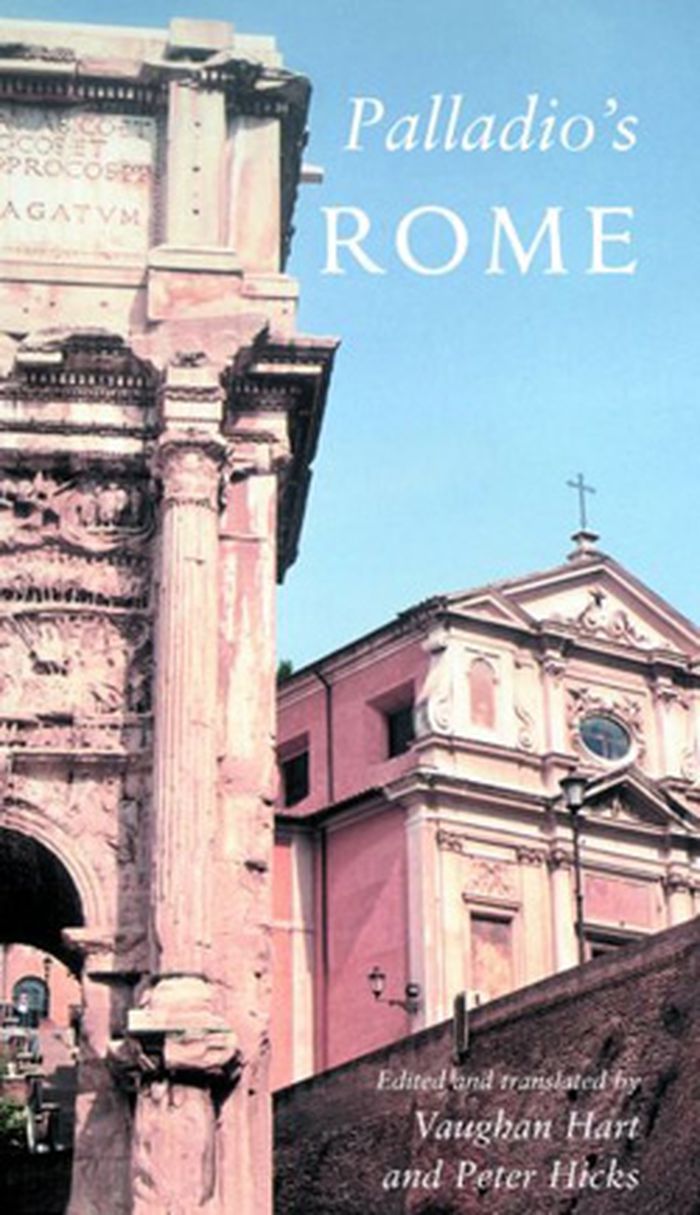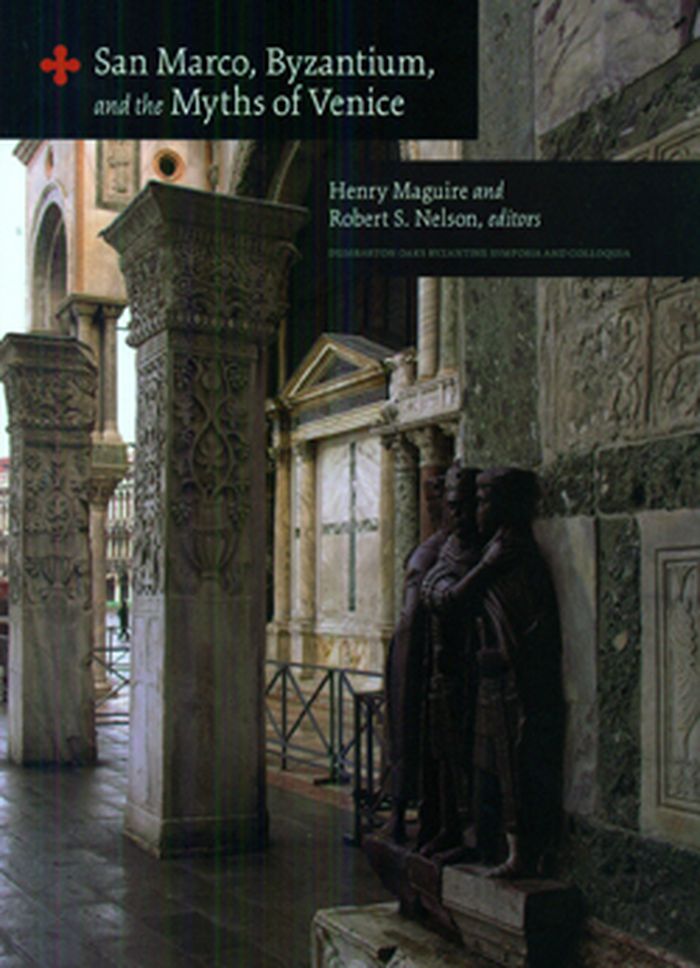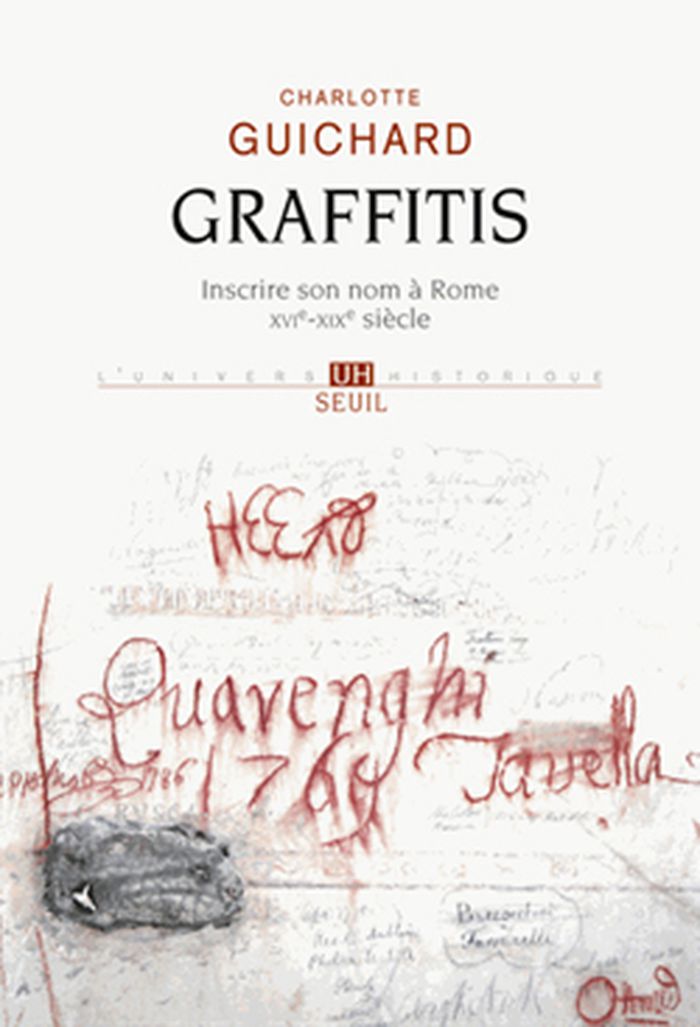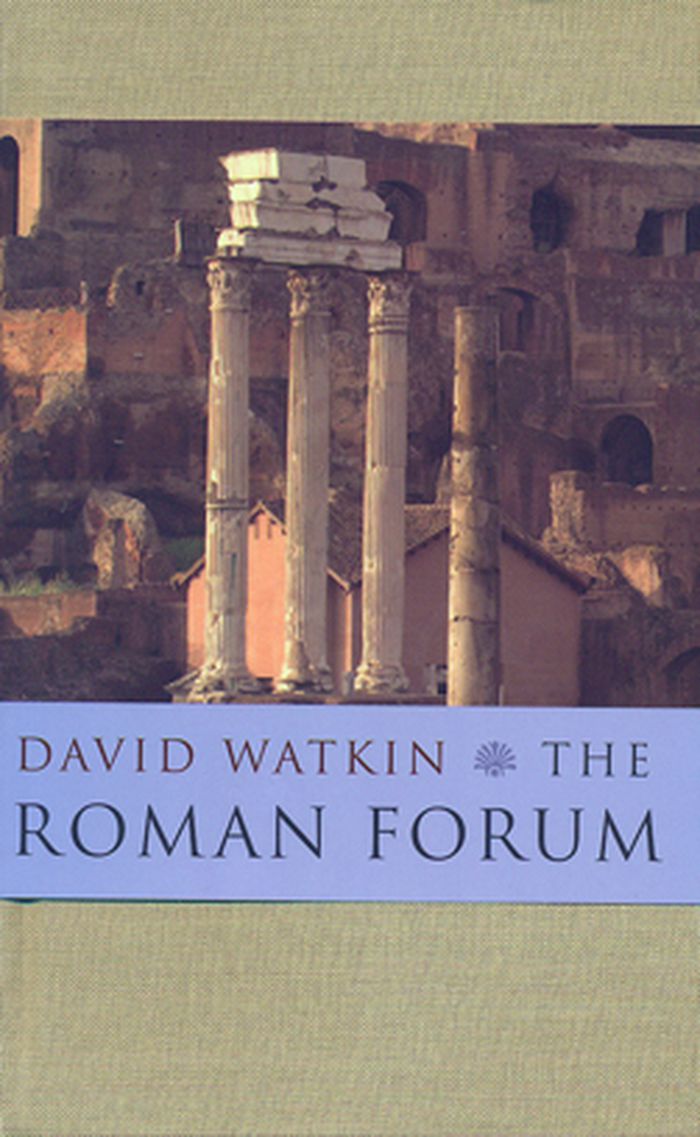Villa Médicis
$84.95
(disponible sur commande)
Résumé:
Où que l'on soit à Rome, il suffit de lever te regard, la villa Médicis trône au dernier étage avant le ciel. Reconstruite par le cardinal Ferdinand de Médicis au XVIe siècle, achetée par Napoléon au XIXe, siège de l'Académie de France à Rome, elle a toujours fasciné et intrigué ceux qui n'ont pu franchir ses hauts murs. Pour l'élaboration de cet ouvrage, la villa(...)
Villa Médicis
Actions:
Prix:
$84.95
(disponible sur commande)
Résumé:
Où que l'on soit à Rome, il suffit de lever te regard, la villa Médicis trône au dernier étage avant le ciel. Reconstruite par le cardinal Ferdinand de Médicis au XVIe siècle, achetée par Napoléon au XIXe, siège de l'Académie de France à Rome, elle a toujours fasciné et intrigué ceux qui n'ont pu franchir ses hauts murs. Pour l'élaboration de cet ouvrage, la villa Médicis s'est ouverte à Dominique Fernandez et Ferrante Ferranti : chambres d'apparat, appartements privés, salons, ateliers, Studiolo, façades sculptées, statues antiques, jardins ; aucun de ses trésors n'a été omis. On croisera aussi au fit des pages les grandes figures qui l'ont fréquentée : Chateaubriand, Corot, Ingres, Berlioz, Bizet, Debussy, Balthus, pensionnaires et directeurs qui, au cours des siècles - et aujourd'hui encore -, ont donné une âme à ce lieu célèbre. Un voyage dans la splendeur d'une des plus mystérieuses maisons au monde.
Palladio's Rome
$39.95
(disponible sur commande)
Résumé:
Andrea Palladio published two enormously popular guides to the churches and antiquities of Rome in 1554. Striving to be both scholarly and popular, Palladio invited his Renaissance readers to discover the charm of Rome’s ancient and medieval wonders, and to follow pilgrimage routes leading from one church to the next. He also described ancient Roman rituals of birth,(...)
Palladio's Rome
Actions:
Prix:
$39.95
(disponible sur commande)
Résumé:
Andrea Palladio published two enormously popular guides to the churches and antiquities of Rome in 1554. Striving to be both scholarly and popular, Palladio invited his Renaissance readers to discover the charm of Rome’s ancient and medieval wonders, and to follow pilgrimage routes leading from one church to the next. He also described ancient Roman rituals of birth, marriage, and death. Here translated into English and joined in a single volume, Palladio’s guidebooks allow modern visitors to enjoy Rome exactly as their predecessors did 450 years ago. Enhanced with illustrations and commentary, the book also includes the first full English translation of Raphael’s letter to Pope Leo X on the monuments of ancient Rome. For architectural historians, tourists, and armchair travelers, this book offers insights into the antiquarian and ecclesiastical preoccupations of one of the Renaissance architectural masters.
$45.00
(disponible sur commande)
Résumé:
In this publication, James H. Johnson offers a spirited analysis of masking in this carnival-loving city. He draws on a wealth of material to explore the world view of maskers, both during and outside of carnival, and reconstructs their logic: covering the face in public was a uniquely Venetian response to one of the most rigid class hierarchies in European history. This(...)
Venice incognito: masks in the serene republic
Actions:
Prix:
$45.00
(disponible sur commande)
Résumé:
In this publication, James H. Johnson offers a spirited analysis of masking in this carnival-loving city. He draws on a wealth of material to explore the world view of maskers, both during and outside of carnival, and reconstructs their logic: covering the face in public was a uniquely Venetian response to one of the most rigid class hierarchies in European history. This vivid account goes beyond common views that masking was about forgetting the past and minding the muse of pleasure to offer fresh insight into the historical construction of identity.
The Colosseum
$17.95
(disponible sur commande)
Résumé:
The Colosseum describes how the arena was built and at what cost; we are introduced to the emperors who sometimes fought in gladiatorial games staged at the Colosseum; and we take measure of the audience who reveled in, or opposed, these games. The authors also trace the strange afterlife of the monument—as fortress, shrine of martyrs, church, and glue factory.
The Colosseum
Actions:
Prix:
$17.95
(disponible sur commande)
Résumé:
The Colosseum describes how the arena was built and at what cost; we are introduced to the emperors who sometimes fought in gladiatorial games staged at the Colosseum; and we take measure of the audience who reveled in, or opposed, these games. The authors also trace the strange afterlife of the monument—as fortress, shrine of martyrs, church, and glue factory.
$59.95
(disponible sur commande)
Résumé:
Through the use of account books, inventories, wills, and other records, Renata Ago examines early modern attitudes toward possessions, asking what people did with their things, why they wrote about them, and how they passed objects on to their heirs. An investigation into the relationship between people and the things they buy, Gusto for Things paints a portrait of the(...)
Gusto for things : a history of objects in Seventeenth-Century Rome
Actions:
Prix:
$59.95
(disponible sur commande)
Résumé:
Through the use of account books, inventories, wills, and other records, Renata Ago examines early modern attitudes toward possessions, asking what people did with their things, why they wrote about them, and how they passed objects on to their heirs. An investigation into the relationship between people and the things they buy, Gusto for Things paints a portrait of the meaning of objects in preindustrial Europe.
$63.95
(disponible sur commande)
Résumé:
The church of San Marco of Venice has long played a central role in Venetian political, ceremonial, and religious life. Its renowned assemblage of mosaics, sculpture, metalwork, and reliquaries are, in origin, Roman, Byzantine, Venetian, or Venetian imitation of Byzantine designs. In San Marco, Byzantium, and the Myths of Venice, the authors assess the significance of the(...)
décembre 2010
San Marco, Byzantium, and the myths of Venice
Actions:
Prix:
$63.95
(disponible sur commande)
Résumé:
The church of San Marco of Venice has long played a central role in Venetian political, ceremonial, and religious life. Its renowned assemblage of mosaics, sculpture, metalwork, and reliquaries are, in origin, Roman, Byzantine, Venetian, or Venetian imitation of Byzantine designs. In San Marco, Byzantium, and the Myths of Venice, the authors assess the significance of the embellishment of the church and its immediate surroundings, especially during the thirteenth and fourteenth centuries, when most of the Byzantine material was acquired, largely from Constantinople. The church and its decoration are studied in relation to Venice’s interests abroad and on mainland Italy. The authors address the diverse styles, sources, meanings, and significance of this art, both individually and as an ensemble. Building upon developments in scholarship since Otto Demus’s masterly studies of the church, the book offers new insights into the inspiration, purposes, and mutability of San Marco and the myths that inspired and motivated Venetians.
$37.95
(disponible sur commande)
Résumé:
Vues de près, les peintures antiques de la villa Adriana à Tivoli, les fresques de Raphaël au palais du Vatican, mais aussi celles de la galerie des Carrache dans le palais Farnèse, et tant d’autres, offrent un spectacle étonnant. Ce sont des œuvres striées de noms, de dates et même d’esquisses, très différentes des images lisses, intactes et éclatantes auxquelles les(...)
Graffitis: inscrire son nom à Rome (XVe-XIXe siècle)
Actions:
Prix:
$37.95
(disponible sur commande)
Résumé:
Vues de près, les peintures antiques de la villa Adriana à Tivoli, les fresques de Raphaël au palais du Vatican, mais aussi celles de la galerie des Carrache dans le palais Farnèse, et tant d’autres, offrent un spectacle étonnant. Ce sont des œuvres striées de noms, de dates et même d’esquisses, très différentes des images lisses, intactes et éclatantes auxquelles les livres d’art nous ont habitués. Les graffitis y sont omniprésents. Ils furent réalisés par des artistes parfois célèbres, au cours de leur période de formation à Rome, par des amateurs lors du Grand Tour, par des soldats ou des touristes de passage à Rome entre les XVIe et XIXe siècles. Ce livre invite à un autre regard sur l’art et son histoire : non pas esthétique mais archéologique ; un regard de biais, littéralement. Ainsi rendus à leur visibilité, les graffitis donnent à voir une autre histoire du chef-d’œuvre, matérielle, tactile et anthropologique.
The Roman forum
$22.99
(disponible sur commande)
Résumé:
One of the most visited sites in Italy, the Roman Forum is also one of the best-known wonders of the Roman world. Though a highpoint on the tourist route around Rome, for many visitors the site can be a baffling disappointment. Several of the monuments turn out to be nineteenth- or twentieth-century reconstructions, while the rubble and the holes made by archaeologists(...)
The Roman forum
Actions:
Prix:
$22.99
(disponible sur commande)
Résumé:
One of the most visited sites in Italy, the Roman Forum is also one of the best-known wonders of the Roman world. Though a highpoint on the tourist route around Rome, for many visitors the site can be a baffling disappointment. Several of the monuments turn out to be nineteenth- or twentieth-century reconstructions, while the rubble and the holes made by archaeologists have an unclear relationship to the standing remains, and, to all but the most skilled Romanists, the Forum is an unfortunate mess.
The piazza San Marco
$22.99
(disponible sur commande)
Résumé:
The piazza San Marco, one of the most famous and instantly recognizable townscapes in the West, if not the world, has been described as a stage set, as Europe’s drawing room, as a painter’s canvas. This book traces the changing shape and function of the piazza, from its beginnings in the ninth century to its present day ubiquity in the Venetian, European, as well as(...)
The piazza San Marco
Actions:
Prix:
$22.99
(disponible sur commande)
Résumé:
The piazza San Marco, one of the most famous and instantly recognizable townscapes in the West, if not the world, has been described as a stage set, as Europe’s drawing room, as a painter’s canvas. This book traces the changing shape and function of the piazza, from its beginnings in the ninth century to its present day ubiquity in the Venetian, European, as well as global imagination. Through its long history, the Piazza San Marco has functioned as civic space that was used for such varied activities as public meetings; animal-baiting; executions; state processions; meat and produce markets; a performance venue for rock concerts; as well as, more recently, a cafe to enjoy a leisurely Campari. Constantly alert to the question of function, this book recreates not only rituals of the past but also activities of the present.
$31.95
(disponible sur commande)
Résumé:
This book examines house types from Britain to Syria to disclose how people imagined and articulated their place in the Roman world. Shelly Hales considers the nature and role of domestic decoration and its part in promoting social identities. From the Egyptian themes of imperial residences in Italy, to the viticultural designs found in the rock-cut homes in Petra, this(...)
The Roman house and social identity
Actions:
Prix:
$31.95
(disponible sur commande)
Résumé:
This book examines house types from Britain to Syria to disclose how people imagined and articulated their place in the Roman world. Shelly Hales considers the nature and role of domestic decoration and its part in promoting social identities. From the Egyptian themes of imperial residences in Italy, to the viticultural designs found in the rock-cut homes in Petra, this decoration consistently appeals to fantasies beyond the immediate realities of their inhabitants. Employing a wide range of approaches to the study of the house and acculturation in the Roman Empire, Hales' book is the first synthesis of Roman domestic architecture









